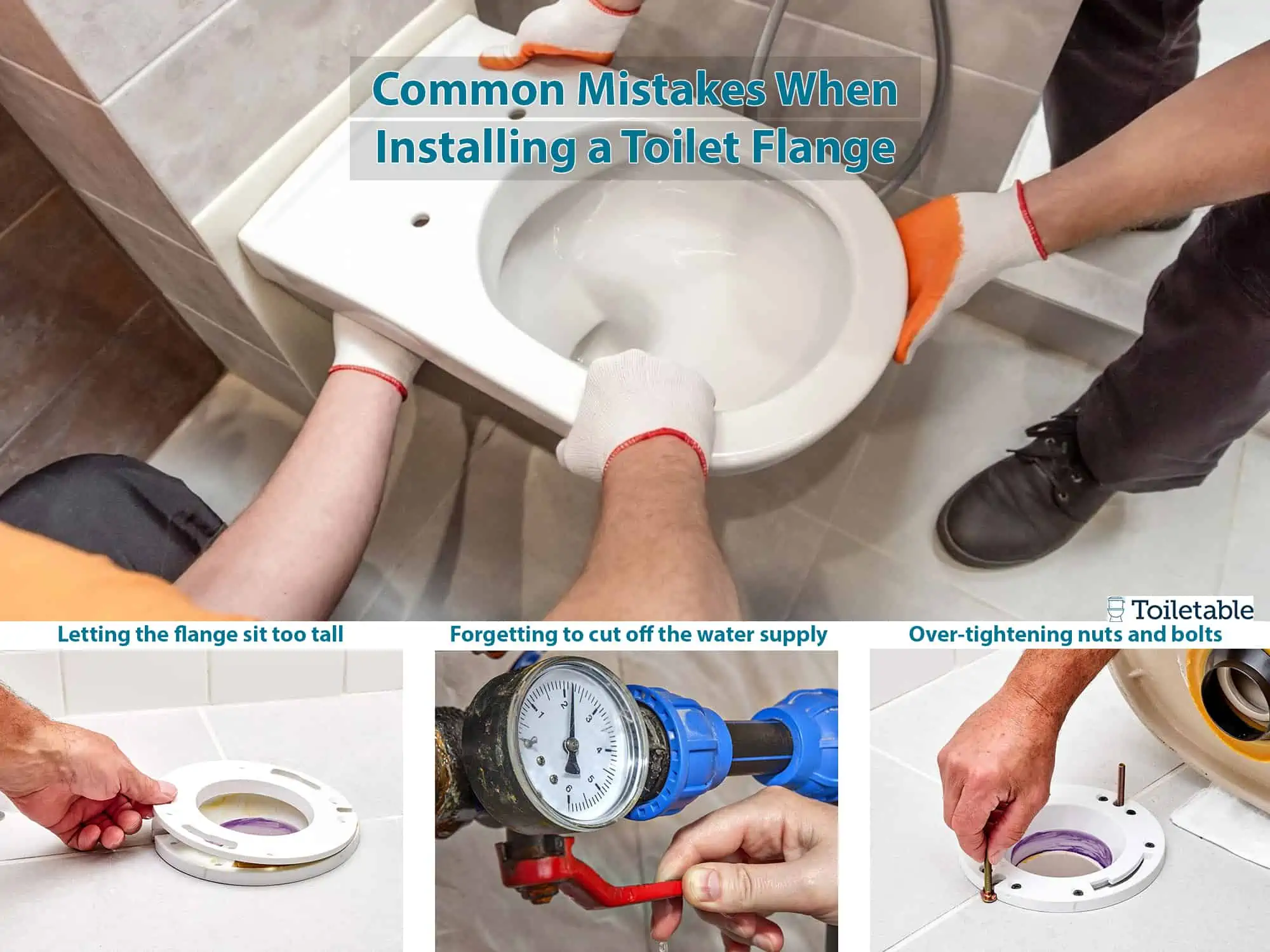A flange is the part of the toilet which connects the toilet to the drainpipe in the floor. You may need to change the flange if it is cracked or broken and water is leaking from around the base of the toilet. While the task of replacing the flange itself is fairly straightforward, it does require a high amount of strength and precision.
If you are not as experienced with DIY plumbing work, we recommend calling in a professional to either complete the repair or offer advice while you complete the task. However, if you have the skills, experience, and time to do the repair yourself, we’ve outlined all the steps below for how to efficiently replace a broken flange.
Tools Needed
Installing a new toilet flange doesn’t require special tools. You will need the tools listed below.

- Old newspapers (to cover the floor)
- Screwdriver
- Putty knife
- Rag
- New flange
How To Install a Toilet Flange
There are 4 main steps to follow when installing a new toilet flange.

Step 1- Preparing the Area
Now, first of all, replacing the flange is going to be messy. We recommend covering the bathroom floor with newspapers which can be cleaned up easily afterward. This step is pretty much the rule for any toilet repair-related activity. Next, disconnect the water supply to the toilet and flush the remaining water in the bowl. If any water still remains, you can use a sponge to get rid of it. Finally, unscrew the toilet from the ground and remove it, placing it on the newspapers to protect your floors.
Step 2- Out with the Old
To remove the old flange, first, you will have to scrape off the wax on the flange seal. Use a sharp object such as a putty knife to peel off all the wax from the seal. Then, unscrew the flange from the floor using a screwdriver. As a precaution against sewer gases, which may back up into your bathroom from the floor opening, we recommend stuffing a rag cloth over the opening of the drain while you work.
Step 3- Getting a Replacement
Clean up the flange with disinfectant so you can bring it to a hardware store to get a replacement. You’ll also want to measure the diameter of the drain pipe to be sure what size to look for. Flanges can be easily found in any plumbing supply or home improvement store, and it shouldn’t be hard to find a replacement for the old flange. While buying the flange, do not forget to purchase a new wax seal to go with it.
Step 4 – The Installation
Once you’re back home with the new flange, its time to complete the installation. Start by removing the rag from the drain so that you can install the new flange. Place the flange on the floor over the drain and tighten the bolts around it. These bolts should stick out of the floor and attach to the toilet. Secure the flange by using a screwdriver and the screws that should come with the product. Finally, place the wax seal on the bottom of the toilet in its designated space.
Now, carefully position your toilet over the drain so that the bolts are right below their respective holes. Push the toilet into place and tighten the nuts around the bolts to secure the toilet to the floor. In case there is any space between the toilet and the floor, you can insert some pennies to easily even everything out.
Make sure that the toilet is stable. Reconnect the water supply and flush the toilet once to make sure everything is working properly. If you notice the toilet is still leaking, then you need to consult an expert as to whether it is some other problem or improper installation.
3 Common Mistakes When Installing a Toilet Flange
Installing a toilet flange can often be messy, and in all that mess, it’s easy to make a mistake. Below are the most common mistakes people make when installing a toilet flange.

- Letting the flange sit too tall. In theory, you can install the toilet with a high sitting flange. However, a too-tall flange comes with the risk of breaking in the long run. By installing the flange at a safe height, you will avoid the risk of your flange breaking and will prevent the additional costs of calling the plumber in the future.
- Forgetting to cut off the water supply. People often forget to cut off the water supply to the toilet when installing a new flange, which can lead to a big mess. Ultimately, shutting off the water supply is one of the most essential steps when installing a new flange or a new toilet in a basement, due to water drainage limitations. Furthermore, when you cut off the water supply, make sure to flush the toilet to drain any remaining water. Without these steps, you’ll have a lot of water in your bathroom to deal with in addition to the actual flange installation.
- Over-tightening nuts and bolts. Although you want to make sure that all the nuts and bolts are tightened enough, over-tightening them can lead to breaking and cracking, which leads to additional costs. Therefore, go slow while tightening everything to safely secure the parts without any unintended damage.
Our Final Opinion
As you can see, installing a new flange is not difficult. However, since it’s going to be messy, it’s essential to cover the floor before installation. Also, make sure to gather all the necessary tools before the installation so you don’t have to stop midway through to grab anything. Finally, always remember to shut off the water supply before beginning the process, and you’ll have a new flange installed quickly and easily!
